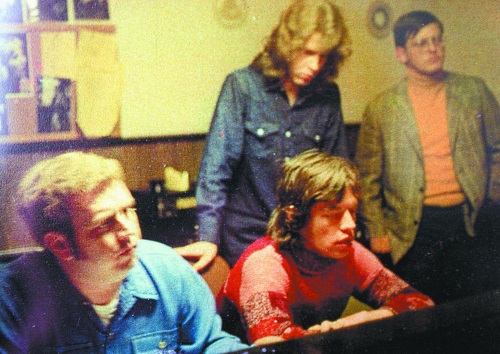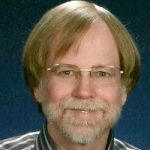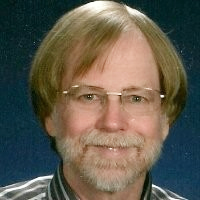If you’ve seen the Rolling Stones Gimme Shelter movie, you might recall Jimmy Johnson’s brief speaking role. He was the one coaching Keith Richards on the proper Alabama pronunciation of “Y’all come back, y’hear.”
For three nights in December of 1969, the Stones cut basic tracks and live vocals for three songs: “You Gotta Move,” “Wild Horses” and “Brown Sugar.” The sessions took place at Muscle Shoals Sound Studios—the “burlap palace” at 3614 Jackson Highway—a nondescript former casket factory which the four rhythm section members had purchased earlier that same year.
Prior to venturing out on their own, the foursome (Johnson, bassist David Hood, keyboardist Barry Beckett and drummer Roger Hawkins) had been the core players at Rick Hall’s Fame Studios, where their rhythm tracks laid the foundation for soul hits by Aretha Franklin, Wilson Pickett, Etta James, Arthur Conley and others.
Since early in his Fame days, Johnson had switched roles back and forth, playing fatback rhythm guitar on some sessions, engineering others. His early engineering credits included “Sweet Soul Music” and “When a Man Loves a Woman.”
But when the Rolling Stones arrived—with little advance notice—Johnson was confronted with something quite other than the relatively low-volume, laid-back soul and pop sessions that were his usual fare.
On one hand, you could say the fledgling Muscle Shoals studio was ill-equipped for the task. On the other hand, you might say maybe this turned out to be a good thing. Let recording history be the judge.
In this interview, Johnson reconstructs (as best can be expected after 35-plus years) the night that gave us a rock song for the ages.
Bruce Borgerson: Let’s try to set the scene for those sessions, starting with the console you used.
Jimmy Johnson: When we did the Stones sessions, we had a Universal Audio console with tube modules, the one with the big rotary knobs, knobs as big as your hand. We had 10 inputs. There was some fixed EQ on it, a fixed low end at 100 Hz, and you could go two clicks of boost at two and four dB, and you could roll back to minus three.
But that’s all it was. It also had an echo send on it. Back then, we were using a live chamber. It wasn’t until a year after that we got an EMT plate. Of course, we were uptown then!
Did you get the Universal modules new, or from another studio?
We bought all the modules new, and put it in our own little console frame. We had a cabinetmaker build us a console, the same as Rick did over at Fame, this was the same thing he had. At the time, it was one of the best things you could get, depending on your budget, of course. Our budget wasn’t too big at the time.
And what kind of tape machines did you have?
We had a Scully 8-track, a 1-inch, and it was great. We had no noise reduction, though back then we cut a lot of stuff at 15 ips. We just packed a lot of it on! And the tape was very forgiving, so as a result it turned out well. We got a lot of saturation, and that kind of became part of the sound.
Back then…I don’t even remember any noise reduction at the time. I know there wasn’t any when we went up to Atlantic in ‘66. But there might have been some around that I didn’t know about.
Were you the only engineer on hand for the Stones sessions?
Yes, I did all those myself, along with my assistant, Larry Hamby. It was supposed to be Jimmy Miller, from what I understand, but he didn’t show up. It was my intention to assist him when the whole thing started, because I heard they would be bringing their own people. As it was, he never made it down. So I became the unofficial-official engineer for all those sessions.















